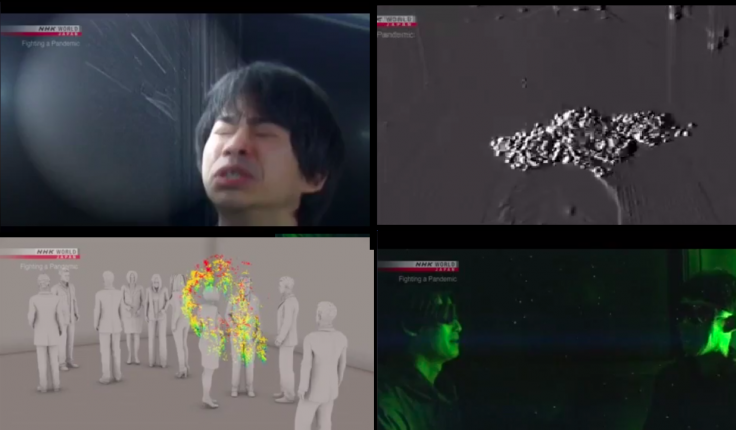The number of confirmed Coronavirus cases getting reported from across the globe is increasing each day. The novel virus has already claimed the lives of 38,721 people with more numbers from Italy, Spain, China, the US, France and Iran, to name a few.
Though the airborne spread of COVID-19 has not been confirmed so far by the World Health Organisation based on available evidence so far, it is proved to transmit from one person to another through droplets. Now, a shocking video has surfaced online showing how important it is to use face masks in daily life, especially when you are sick.
The video, published by Japan's national broadcasting organisation, NHK, shows some experiments conducted by a group of researchers in proving the fast spread of micro-droplets in the air when a person sneezes, coughs or while having a conversation.
"It seems transmissions are happening during conversations and even when people are standing a certain distance apart. We think infection comes from micrometre particles and this transmission mechanism can be called a micro-droplet infection," Kazuniro Tateda, the President of The Japanese Associaton of Infectious Disease is heard saying in the video.
Experiments to show the spread of micro-droplets invisible to naked eyes

So, how does this take place? As part of the experiments, in order to track the particles that surface on air, the team used laser beams and high sensitivity cameras as this technology will help them to detect droplets even as small as 0.1 micrometres wide.
Part 1
The experiment started with a person sneezing. Though a few large droplets are visible to the naked eyes, analysis through the high sensitivity camera from different angles reveals the shocking result. It shows thousands of small micro-droplets floating through the air that are not visible to us otherwise.
Part 2
Then the team headed to the second part of the experiment, in which two people are seen engaging in a conversation by sitting closeby. It shows that when a person speaks loudly, a lot of micro-droplets come out of the person's mouth. The droplets, however, do not drift away, but instead, stay between the individuals itself.
"Micro-droplets carry many viruses. We produce them when we talk loudly or breathe heavily. People around us inhale them and that's how the virus spreads," Tateda adds.
Part 3
The third part of the experiment involves about 10 people inside a closed room. The spread of about one hundred thousands of droplets is seen after one of them coughs once. While large droplets fall on the ground within a minute, the micro-droplets continue to drift and spread all over the room ever after 20 minutes as it is a closed environment.
How to prevent it?
Meanwhile, opening windows and increasing air circulation are believed to be the most effective ways to prevent the spreading of micro-droplets. Researchers claim that proper airflow will help in getting rid of these particles soon as they are really small in size. Also, it is recommended to use face masks if a person is sick as closing the mouth with hands while coughing or sneezing itself cannot stop all the micro-droplets.
"If the air isn't flowing, the micro-droplets won't move and since they can't move on their own, they stay in place for some time," Mashashi Yamakawa, Associate Professor at Kyoto Institute of Technology says.








